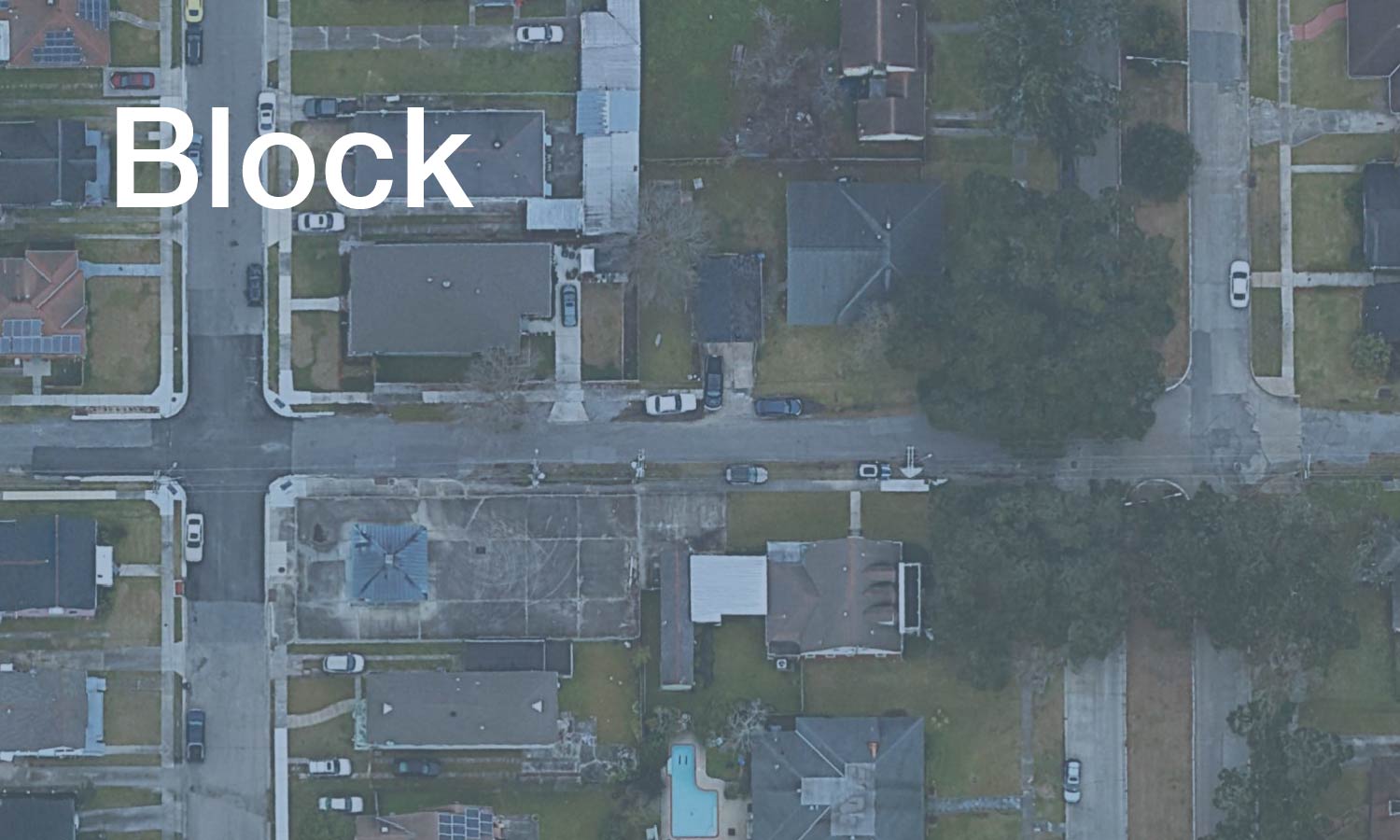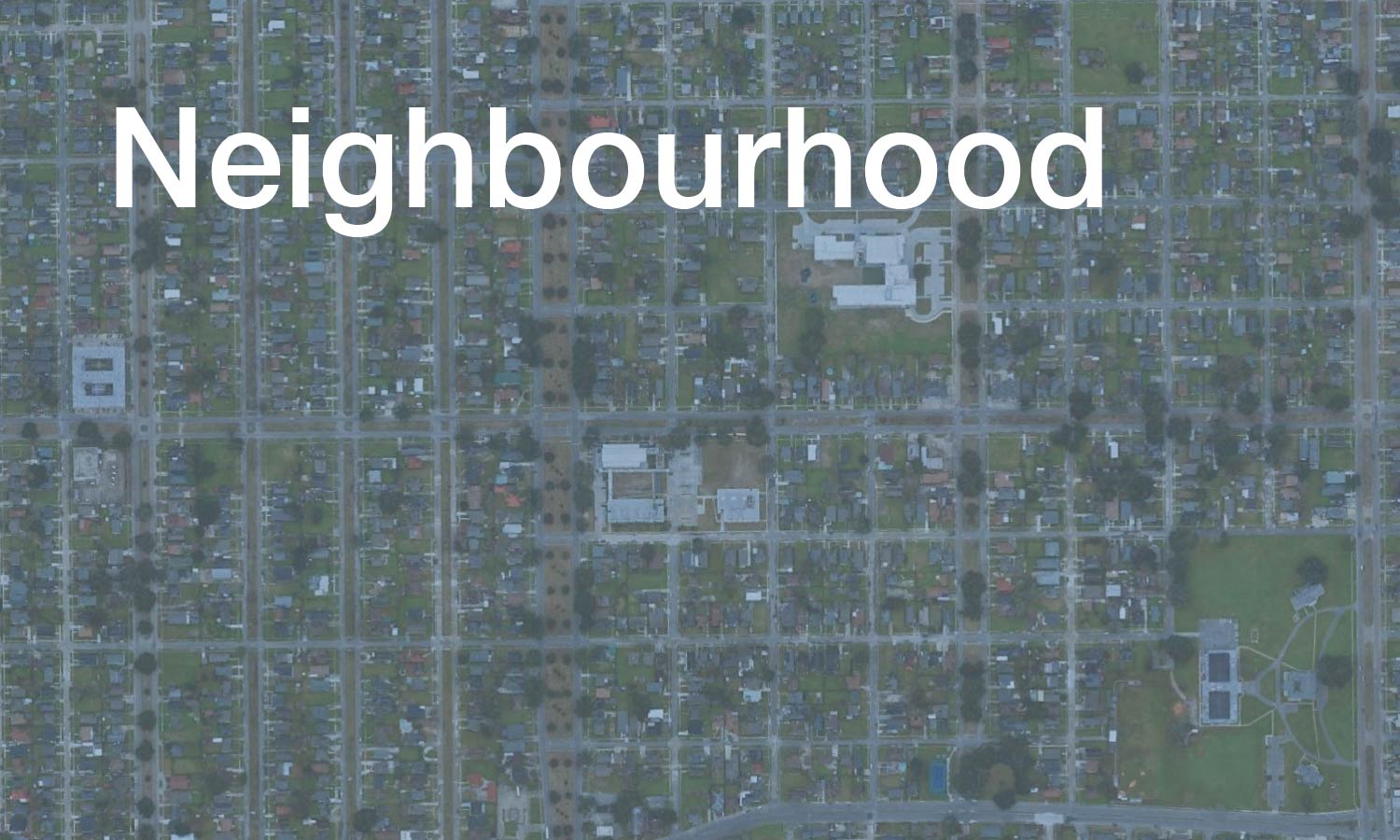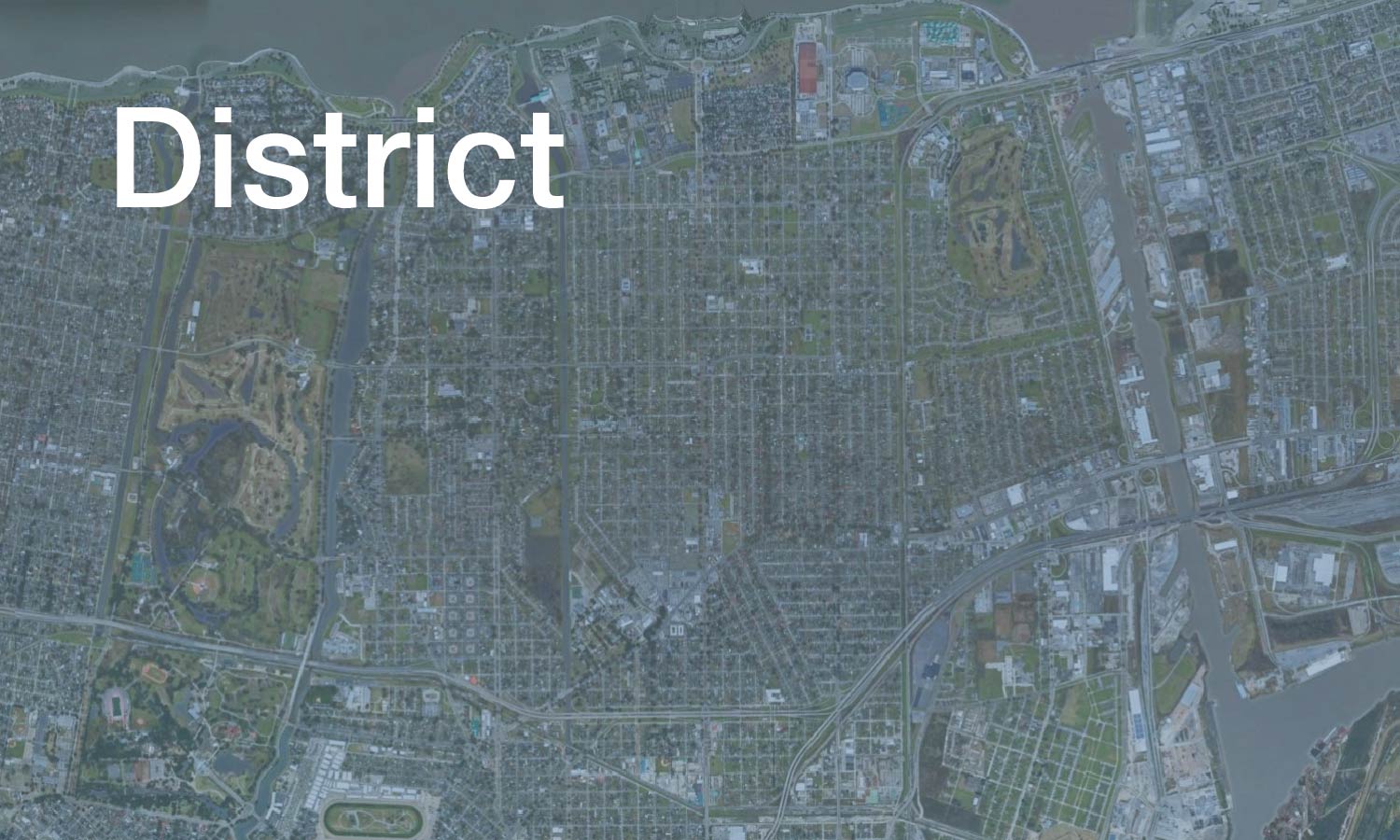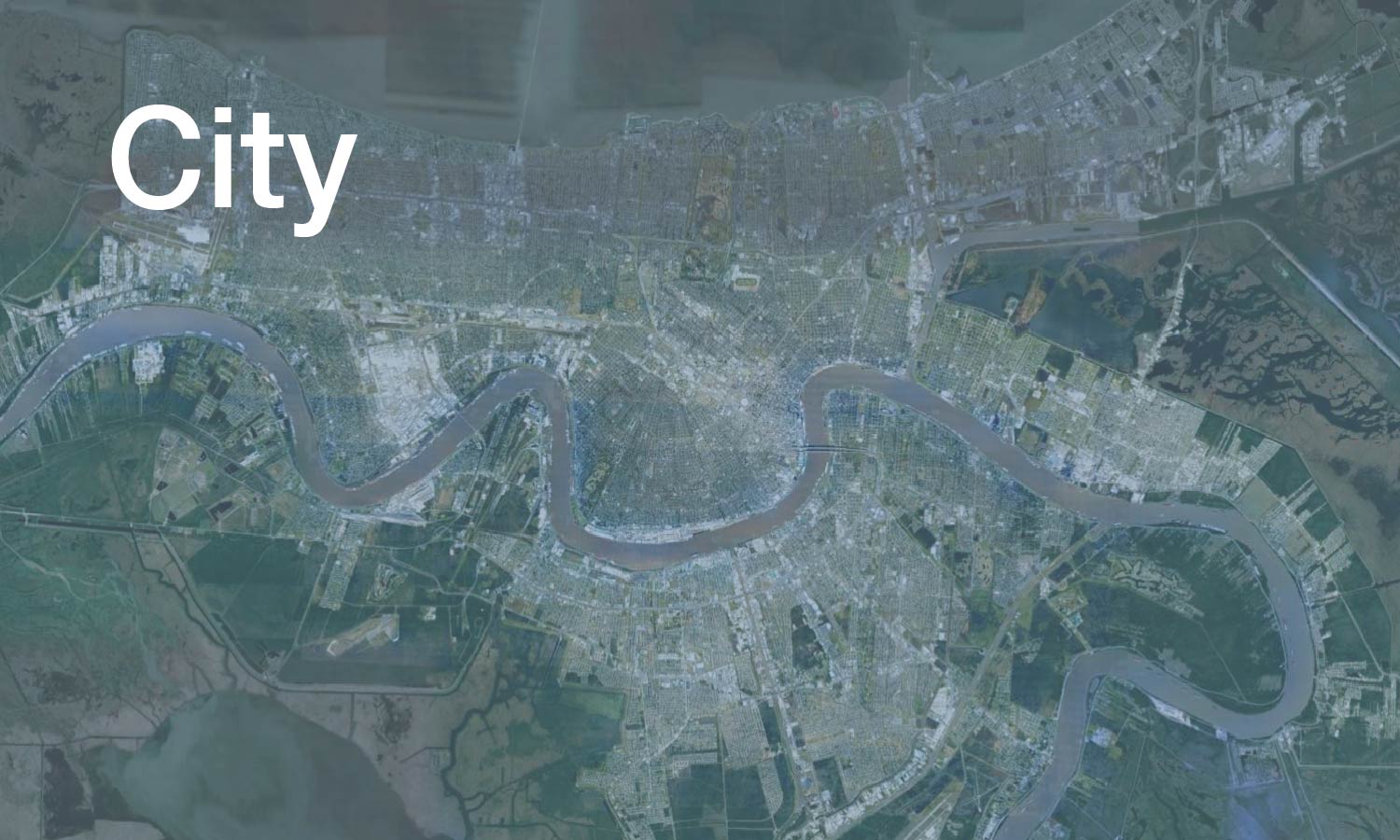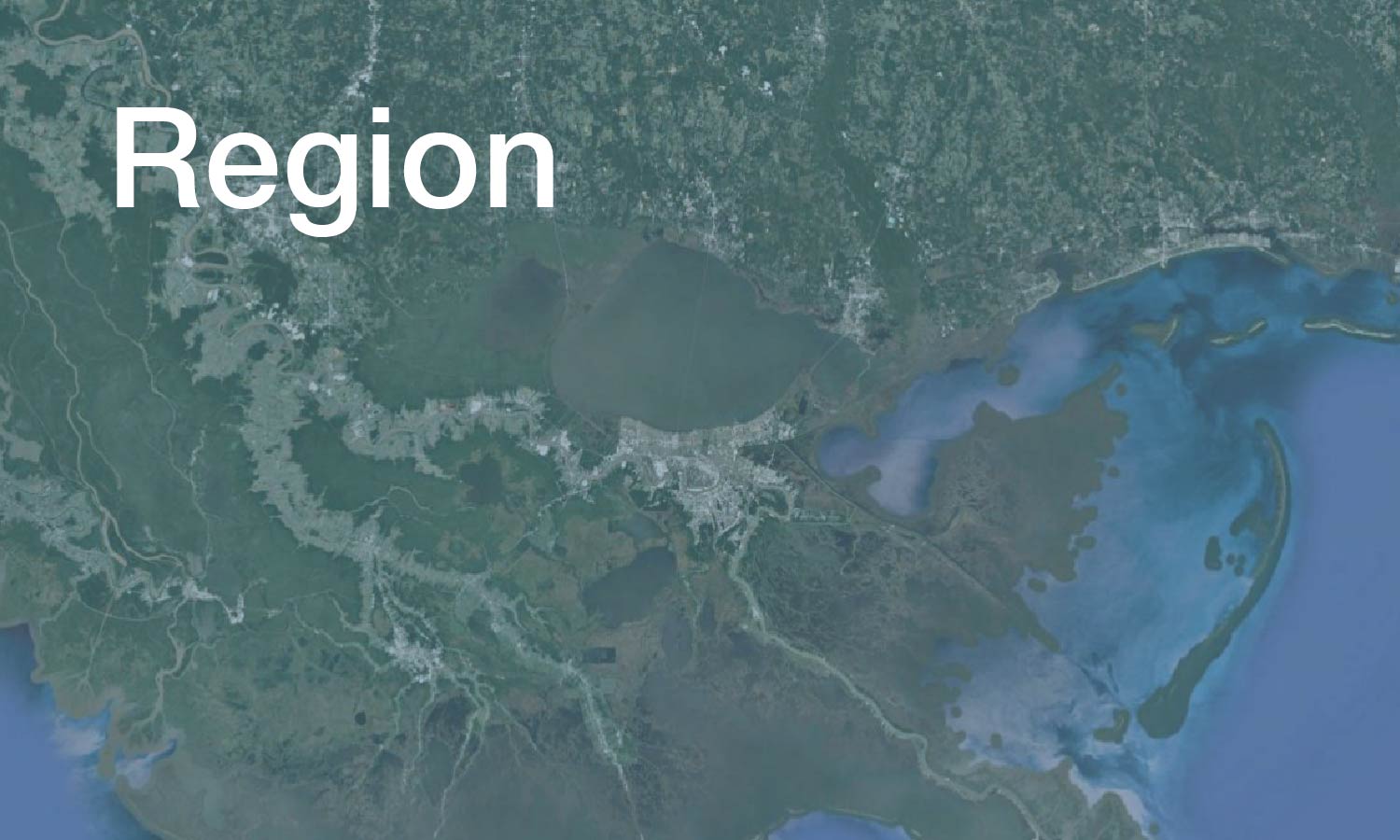Gutter to Gulf aims to define a new vocabulary for urban water infrastructure.
Gutter to Gulf uses documentary work to set an agenda for design. Its research terms have defined a set of questions about how water infrastructure in New Orleans might evolve. Each of the studio’s design projects deals with a familiar landscape problem or type and transforms it according to the dilemmas of the current moment. These projects emerge from critiques of the status quo: asked to identify circumstances that demand change, studio members have addressed specific dilemmas with respect to their programmatic, formal, ecological, and infrastructural implications.
The links above connect to representative Gutter to Gulf projects. They are grouped according to the scale of the issues they raise: blocks and their component lots; neighborhoods; drainage districts; the city; the region; and the Internet. Each project (and each scale) asks a unique set of questions about the definition of infrastructure in twenty-first century New Orleans. From the smallest increments of building—the individual house and garden—to the largest—regional drainage structures—the projects propose constructed and organic systems to manage water. As the Gutter to Gulf initiative progresses, this vocabulary of problems and proposals will grow. The broader its range, the more possibilities for its translation to landscapes and cities far beyond New Orleans, southern Louisiana, and other delta regions: every major city in North America contends in one way or another with issues of water management, and this compendium of strategies and tactics can be transposed and adapted to fit local ecologies, cultures, and circumstances.
The Gutter to Gulf projects have been developed for diagrammatic clarity and experiential richness. Each one raises questions about time, performance, and the evolution of the urban landscape. The studios aim to transcend conventional boundaries among architecture, landscape architecture, urban design, and planning. Projects address both the mechanics and the rhetoric of drainage: the conveyance of water; mechanisms for its storage and absorption; its transformation of ecological systems; its relationship to public space; its legibility in the city; its legal status; and its capacity to increase the ecological and hydrological integrity of the urban landscape.
